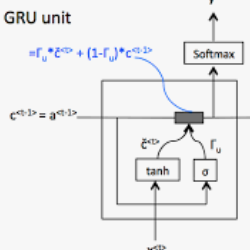Deep-learning based QRS-detection algorithms often require essential post-processing to refine the prediction streams for R-peak localisation. The post-processing performs signal-processing tasks from as simple as, removing isolated 0s or 1s in the prediction-stream to sophisticated steps, which require domain-specific knowledge, including the minimum threshold of a QRS-complex extent or R-R interval. Often these thresholds vary among QRS-detection studies and are empirically determined for the target dataset, which may have implications if the target dataset differs. Moreover, these studies, in general, fail to identify the relative strengths of deep-learning models and post-processing to weigh them appropriately. This study classifies post-processing, as found in the QRS-detection literature, into two levels - moderate, and advanced - and advocates that the thresholds be learned by an appropriate deep-learning module, called a Gated Recurrent Unit (GRU), to avoid explicitly setting post-processing thresholds. This is done by utilising the same philosophy of shifting from hand-crafted feature-engineering to deep-learning-based feature-extraction. The results suggest that GRU learns the post-processing level and the QRS detection performance using GRU-based post-processing marginally follows the domain-specific manual post-processing, without requiring usage of domain-specific threshold parameters. To the best of our knowledge, the use of GRU to learn QRS-detection post-processing from CNN model generated prediction streams is the first of its kind. The outcome was used to recommend a modular design for a QRS-detection system, where the level of complexity of the CNN model and post-processing can be tuned based on the deployment environment.
翻译:深度学习为基础的QRS检测算法往往需要基本的后处理,以完善R峰级定位的预测流。后处理执行信号处理任务时,通常需要必要的后处理,以完善R峰级本地化的预测流。此外,一般而言,这些研究未能确定深层学习模型和后处理方法的相对优点,以适当衡量预测流中的零或1,这需要特定领域的知识,包括QRS复合度的最小阈值或R-R间隔。这些阈值往往因QRS检测研究的不同而不同,并且根据经验确定目标数据集,如果目标数据集不同,这可能产生影响。此外,这些研究未能查明深层学习模型和后处理方法的相对优点,以适当衡量它们。该研究将QRS检测文献中发现的后处理方法分为两个级别,即中等和先进,并主张通过一个适当的深层学习模块学习阈值的阈值阈值,即GRU检测股,从而避免明确设定后处理阈值。这是通过运用从手制作的本地化模型到深层次的深度分析模型,然后是采用基于GRUR的实地数据采集的流程后操作。




